Adjuster Course
in HVAC Refrigerant
a.png?v=10262022175943)
Refrigerant is a critical component for most frequently used HVAC systems, including split systems and package units. It’s not uncommon for adjusters to handle claims with HVAC system failures that include leaking or acidic refrigerant as part of the loss.
Global initiatives to reduce HVAC equipment’s environmental impact have resulted in changing rules about popular refrigerant types, including R-22 and R-410A.
This has led to misinformation, and some contractors have recommended that policyholders replace repairable equipment simply because of the type of refrigerant it uses.
Read on to learn refrigerant fundamentals and how they impact claims.
Refrigerant 101: Test Your Knowledge
Click each box below to find out if the
statements are true or false and why.
Refrigerant is critical to most HVAC systems
TRUE! Refrigerant absorbs and releases heat and transfers it to other components in the most commonly used HVAC systems.
Refrigerant is always
liquid
FALSE! Refrigerant is a chemical compound that changes between a gas or liquid state depending on its temperature or pressure.
There isn’t one set
type of refrigerant
TRUE! Manufacturers make systems that use different types of refrigerants.
Refrigerant needs to be
refilled regularly
FALSE! Refrigerant shouldn’t have to be refilled. It cycles through an HVAC system, meaning a failure has occurred if a system is low on refrigerant.
Moving Away from R-22 in HVAC Systems
Ban on Virgin R-22 in HVAC Systems
What Adjusters
Should Know
Replacing R-22 Equipment
Scary Story: Wrong Compressor
.png?v=10242022181620)
Ban on Virgin R-22
R-22, a hydrochlorofluorocarbon (HCFC), has been one of the most popular refrigerants for decades. The U.S. Clean Air Act and the Montreal Protocol on Substances That Deplete the Ozone Layer required an HCFC phase out of virgin R-22 over several years because of its environmental impacts. The complete ban on the production and importation of virgin R-22 took effect on Jan. 1, 2020. New HVAC systems can’t be manufactured to use this refrigerant.
Ban on Virgin R-22 in HVAC Systems
What Adjusters
Should Know
Replacing R-22 Equipment
Scary Story: Wrong Compressor
-48f527cce259dfa61691d80571bc05e3aef82868.png?v=10242022185411)
R-22 Facts
-
Systems that use R-22 are not illegal.
-
HVAC systems can be maintained, repaired, and serviced with reclaimed R-22.
-
Components for R-22 systems could still be made after Jan. 1, 2020.
-
Reclaimed R-22 is readily available and indistinguishable from virgin refrigerant.
Ban on Virgin R-22 in HVAC Systems
What Adjusters
Should Know
Replacing R-22 Equipment
Scary Story: Wrong Compressor
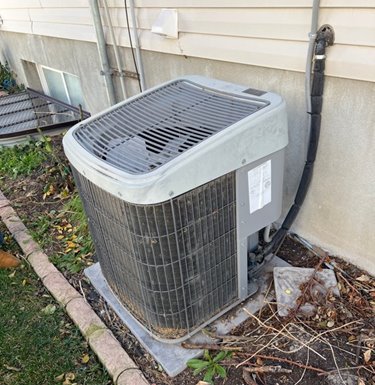
Replacement R-22 Equipment
Occasionally systems that use R-22 need major repairs that lead to a refrigerant mismatch. A new condensing unit or an air handler that uses R-410A, for example, won’t be compatible if the rest of the system uses R-22. A full HVAC replacement isn’t necessary, but additional components may be required to remove the R-22 and make it so that the system functions as designed with R-410A. Otherwise, a refrigerant mismatch could cause more failures that may then require a full replacement.
Ban on Virgin R-22 in HVAC Systems
What Adjusters
Should Know
Replacing R-22 Equipment
Scary Story: Wrong Compressor
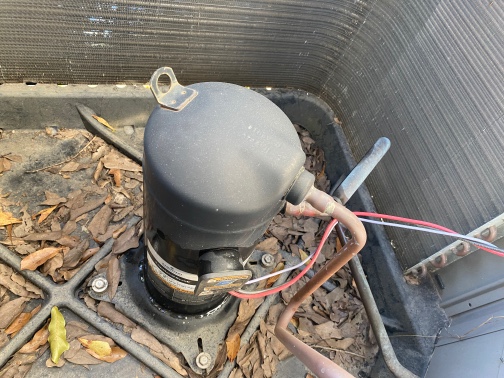
Scary Story: Wrong Compressor
An adjuster asked another assessment company to evaluate and repair a failed compressor. The company installed a condensing unit that used a different refrigerant, which resulted in more failures. The adjuster sought HVACi’s expert investigation to decide what to do next.
Rise in Popularity of R-410A
R-410A isn’t a new refrigerant in HVAC systems, but it rose in popularity since manufacturers can no longer use R-22. R-410A is a blend of two hydrofluorocarbons (HFCs) and doesn’t have chlorine. While it doesn’t have the same ozone depletion potential as R-22, its other negative environmental impacts, such as its high Global Warming Potential (GWP) have led to its current phasedown.
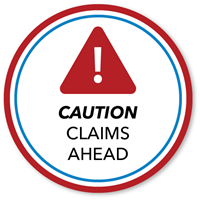
Scary Story: Refrigerant Mismatch
The Phasedown of R-410A
R-410A has a lower ozone depletion rate than R-22, but HFCs like R-410A are believed to cause negative global warming impacts. Efforts to phase down their use have started and are part of a global initiative.
- The Kigali Amendment to the Montreal Protocol was approved by multiple countries with the goal of phasing down HFCs and reducing production and consumption of them by more than 80% by 2047.
- The U.S. Senate also ratified the Kigali Amendment in September 2022 to show support and gradually reduce the consumption and production of HFCs within the United States.
- The American Innovation and Manufacturing Act was enacted in December 2020 and directs the Environmental Protection Agency (EPA) to address the production and consumption of listed HFCs, manage HFCs and their substitutes, and facilitate the transition to next-generation technologies.
- In October 2022, the EPA issued its proposed Phasedown of Hydrofluorocarbons: Allowance Allocation Methodology for 2024 and Later Years. The proposal included steps to implement a 40% reduction of HFCs in 2024.
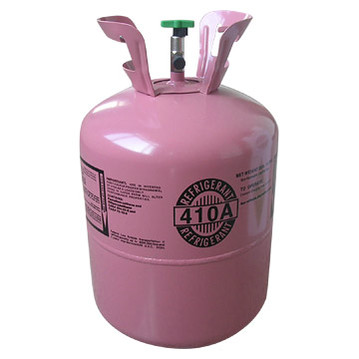
Moving to Refrigerants in the A2L Safety Classification
The American Innovation and Manufacturing Act was one of the United States’ responses by authorizing the Environmental Protection Agency to establish regulations to phase down HFC refrigerants by 85% by 2036. ASHRAE Standard 34 has designated refrigerants in the A2L safety classification as suitable replacements for R-410A. Click the arrows to learn more.
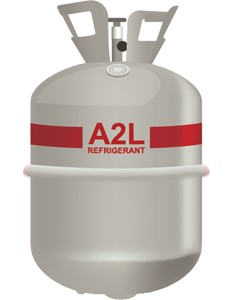
R-454B and R-32
These are A2L refrigerants and popular options for replacing R-410A in HVAC systems. Many major HVAC manufacturers have reported selecting R-454B for HVAC systems, but some may use R-32.
A2L Properties
A2L refrigerants are characterized by low toxicity and mild flammability. They have lower GWPs than R-410A.
EPA Has Deemed Them Acceptable
The Protection of Stratospheric Ozone: Listing of Substitutes Under the Significant New Alternatives Policy Program, published in May 2022, lists R-454B and other similar refrigerants as “acceptable, subject to use conditions, for use in residential and light commercial air condition and heat pumps end-use for new equipment.” The same document lists R-32 as “acceptable, subject to use conditions, for use in residential and light commercial air conditioning and heat pumps – equipment other than self-contained room air conditioners for new equipment.”
The Future of HVAC Refrigerants
Get a closer look at A2Ls and what this shift means for insurance adjusters with this guide.
Let the Experts Answer Your Questions
Adjusters should continue ensuring accurate settlements on HVAC claims and not settle for unnecessary replacements based on misleading information about what regulations require.
Our HVACi team stays up to date with all HVAC efficiency and refrigerant rules. Our experts have the experience and knowledge to thoroughly evaluate HVAC and refrigeration equipment to determine cause of loss, scope of damage, and market value pricing. Don’t leave a claim with HVAC equipment up to misinformation or speculation.
Submit an Assignment
Opens in a new window.